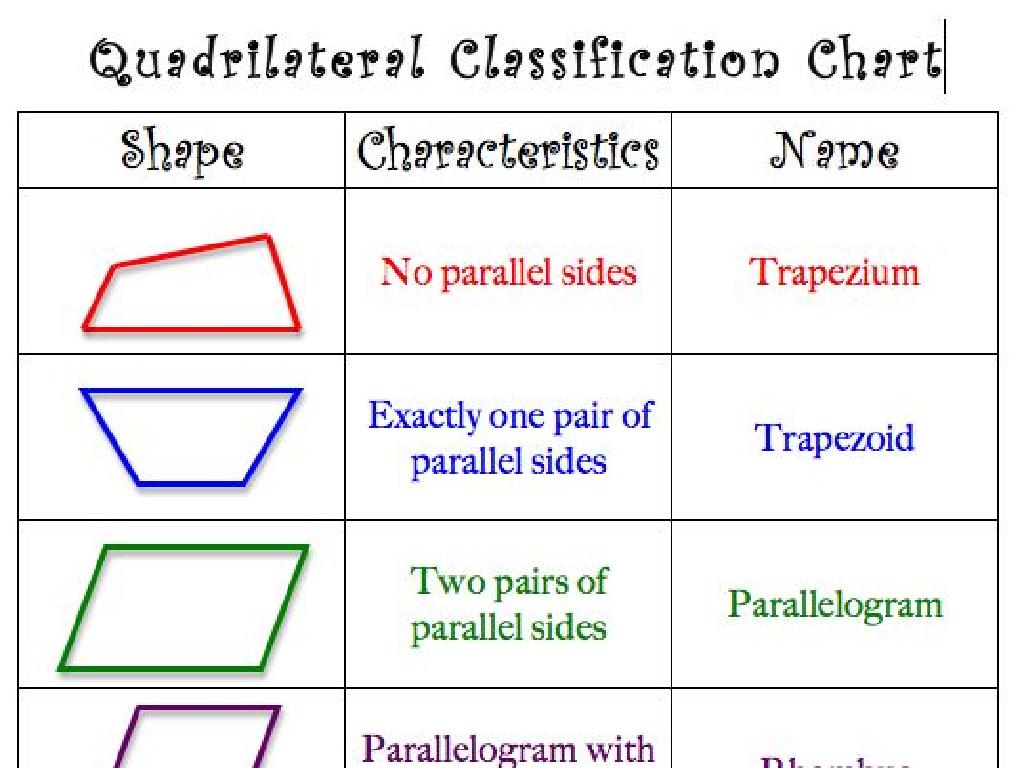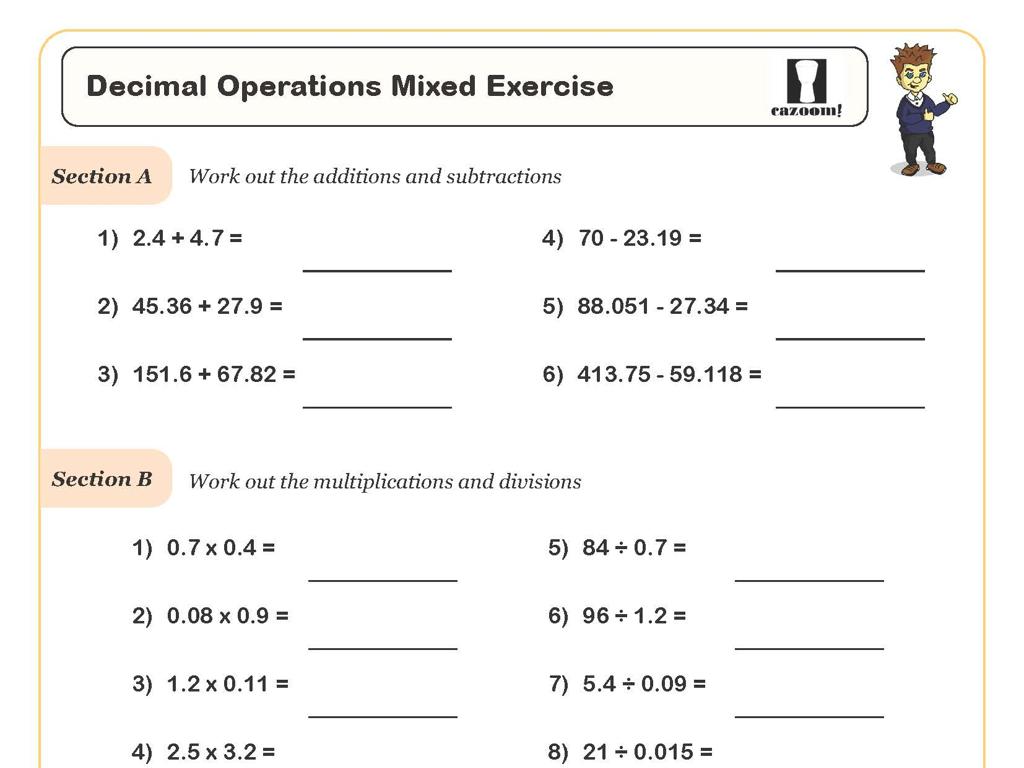Subtract Fractions With Like Denominators Using Strip Models
Subject: Math
Grade: Fourth grade
Topic: Understand Fraction Addition And Subtraction
Please LOG IN to download the presentation. Access is available to registered users only.
View More Content
Subtracting Fractions with Like Denominators
– Learn to subtract fractions
– Why fractions matter
– Fractions are used in cooking, budgeting, and more
– Fractions represent parts
– A fraction like 1/4 means one part out of four equal parts
– Using strip models for subtraction
– Visual strips help us see the parts we subtract
|
This slide introduces the concept of subtracting fractions with like denominators, emphasizing the practicality of fractions in everyday life. Begin by reviewing what fractions are, highlighting that they represent parts of a whole. Use visual aids like strip models to demonstrate how fractions can be subtracted by removing parts of the whole. Encourage students to think of real-life scenarios where they might need to subtract fractions, such as measuring ingredients for a recipe or dividing a pizza among friends. The goal is to build a foundational understanding of fractions as a concept and to show how strip models can simplify the process of subtraction.
Understanding Fractions
– A fraction is part of a whole
– Numerator and denominator explained
– The top number (numerator) shows how many parts we have
– Denominator: number of equal parts
– The bottom number (denominator) shows into how many parts the whole is divided
– Visualizing fractions with strip models
– Strip models help us see fractions as parts of a whole bar or strip
|
Begin the lesson by explaining that a fraction represents a part of a whole, like a slice of pizza out of a whole pizza. Clarify the roles of the numerator and denominator in a fraction. The numerator indicates how many parts of the whole we are considering, while the denominator tells us into how many pieces the whole is divided. Use strip models to visually demonstrate fractions, as they provide a clear and tangible way for students to understand how a whole can be divided into equal parts. This foundational understanding will be crucial as they learn to subtract fractions with like denominators.
Subtracting Fractions with Like Denominators
– Understanding like denominators
– Denominators are the same, e.g., 1/4 and 3/4.
– Same size pieces of cake
– Imagine cutting a cake into equal parts; each part is a fraction of the whole.
– Easier subtraction with like denominators
– When fractions have the same denominators, we simply subtract the numerators.
– Visualizing with strip models
– Strip models show fractions as equal parts of a bar, helping us see the subtraction.
|
This slide introduces the concept of like denominators as a foundation for subtracting fractions. Emphasize that like denominators are the ‘same size pieces’ which makes subtraction straightforward. Use the analogy of a cake cut into equal parts to help students visualize equal fractions. Demonstrate how to subtract fractions with like denominators by only subtracting the top numbers (numerators) while keeping the bottom number (denominator) the same. Introduce strip models as a visual aid to represent fractions and show the subtraction process. Encourage students to draw their own strip models to practice subtracting fractions with like denominators.
Subtracting Fractions with Strip Models
– Visualizing fractions with strip models
– Strip models represent fractions as parts of a whole.
– Dividing strips into equal parts
– If a fraction has a denominator of 4, divide a strip into 4 equal parts.
– Easy subtraction of like denominators
– To subtract, simply remove the parts that represent the second fraction.
– Practice with strip models
– Let’s try subtracting 3/4 – 1/4 with a strip model.
|
This slide introduces strip models as a tool for visualizing the subtraction of fractions with like denominators. Explain that each strip represents a whole, and the number of parts it’s divided into corresponds to the denominator of the fractions being subtracted. Emphasize that all parts must be equal, as this is crucial for understanding fractions. Demonstrate subtraction by removing sections of the strip that represent the fraction being subtracted. Provide several examples and encourage students to draw their own strip models to practice subtracting fractions like 3/4 – 1/4, ensuring they understand the concept of ‘taking away’ parts of the whole.
Subtracting Fractions with Strip Models
– Ensure fractions have the same denominator
– Color in fractions on the strip models
– If you have 3/4 and subtract 1/4, color 3 parts out of 4
– Erase to subtract fractions
– Remove the 1/4 part you’re subtracting from the model
– Observe the remaining colored section
– The colored parts left show the result, which is 2/4 or 1/2
|
This slide introduces the concept of subtracting fractions using strip models, which are visual aids that help students understand fractions better. Start by ensuring the fractions have like denominators, which means they are the same on the bottom. Then, have students color in the total fraction from which they are subtracting. Next, they will erase the part that represents the fraction they are subtracting. What remains colored is the answer to the subtraction problem. For example, if they start with 3/4 and subtract 1/4, they will color three parts, erase one, and two parts will remain, showing that 3/4 – 1/4 = 2/4 or simplified to 1/2. This visual method reinforces the concept of subtraction by removing parts of a whole.
Subtracting Fractions with Strip Models
– Start with fractions like 3/4 – 1/4
– Visualize 3/4 as 3 colored parts out of 4
– Ensure denominators are the same
– Since denominators match, we can subtract
– Use strip models to subtract
– Erase 1 part from the 3/4 strip model
– Simplify the result if possible
– 2/4 remains, which simplifies to 1/2
|
This slide introduces students to the concept of subtracting fractions with like denominators using strip models. Begin by explaining that the denominators must be the same to subtract fractions. Use a strip model to color in 3 out of 4 parts for 3/4, then erase 1 part to represent subtracting 1/4. Students will see that they are left with 2/4, which can be simplified to 1/2. Emphasize the importance of simplifying fractions when possible. This visual method helps students understand the concept of subtraction by physically removing parts of the whole.
Practice Time: Subtracting Fractions
– Try subtracting fractions yourself
– Use strip models for visualization
– Picture each fraction as part of a whole strip
– Ensure denominators match
– Like denominators mean the same-sized pieces
– Check your answer with a partner
– Discuss your method and answer
|
This slide is designed for a hands-on activity where students will practice subtracting fractions with like denominators using strip models. Encourage students to draw strips representing each fraction and to shade the parts they are subtracting. Remind them to verify that the denominators are the same before subtracting, which ensures the pieces are of equal size. After completing the subtraction, students should pair up to compare their visual models and answers, discussing any differences in their approach. This peer review process will help solidify their understanding of the concept. Prepare to offer additional strip model examples and guide students who may struggle with the concept.
Class Activity: Making Fraction Strips
– Create your own fraction strips
– Cut paper strips into equal parts
Divide strips into sections representing fractions like 1/2, 1/3, 1/4, etc.
– Subtract fractions using strips
Use the strips to visually subtract fractions with the same bottom number
– Discuss your findings with peers
|
This activity is designed to help students understand the concept of subtracting fractions with like denominators through a hands-on approach. Provide students with paper strips and guide them to accurately divide the strips into equal parts representing different denominators. Once the strips are ready, instruct students to use them to subtract fractions by removing the corresponding parts. For example, to subtract 1/4 from 3/4, they would remove one section from a strip divided into fourths. Encourage students to work in pairs or groups to foster discussion and peer learning. After the activity, have students share their methods and results with the class to reinforce their understanding. Prepare additional fraction strip sets for students who may need them and consider having a few pre-made examples to show the class.
Mastering Fraction Subtraction
– Congratulations on learning subtraction!
– Strip models aid in understanding
– Visual strips show parts of a whole for easy comparison
– Practice makes perfect
– The more you practice, the easier it gets
– Aim to become a fraction expert
|
This slide wraps up the lesson on subtracting fractions with like denominators using strip models. It’s a moment to celebrate the students’ efforts and understanding. Emphasize the importance of visual aids like strip models in grasping the concept of fractions. Encourage consistent practice as it is key to mastery. Provide additional worksheets or suggest online resources for further practice at home. Remind the students that with dedication, they can become proficient in fractions, which are a fundamental part of math.





